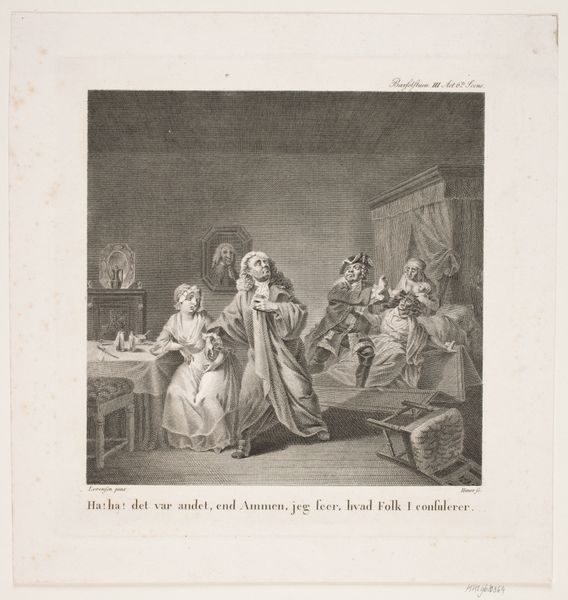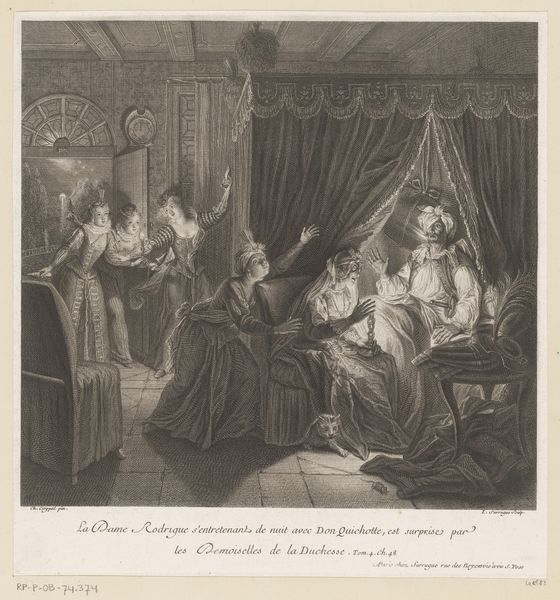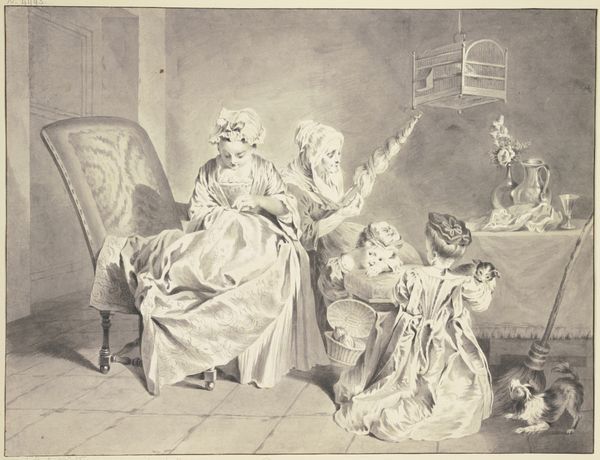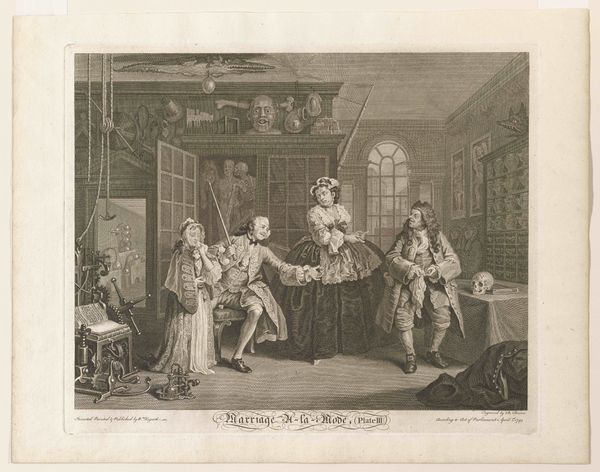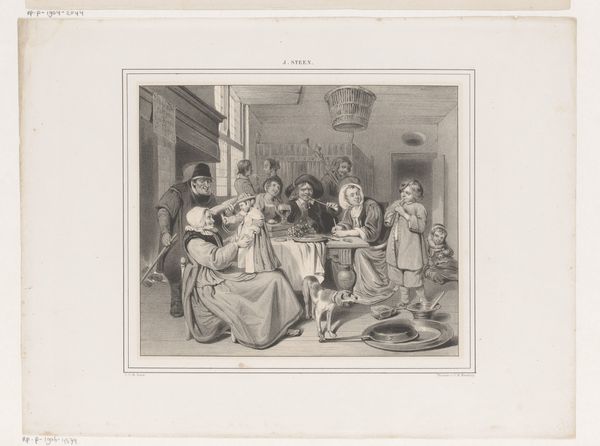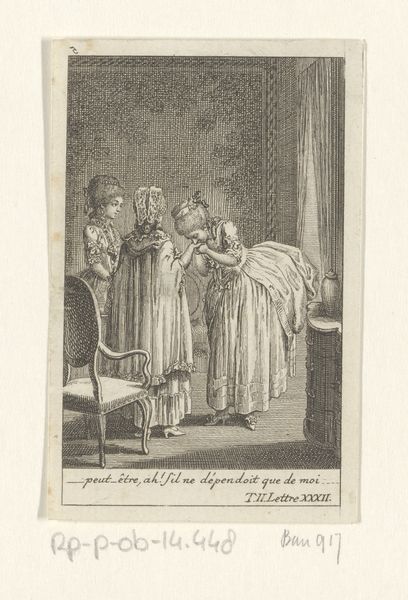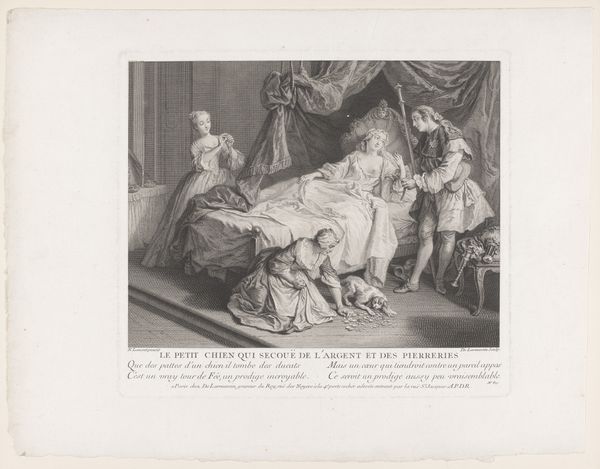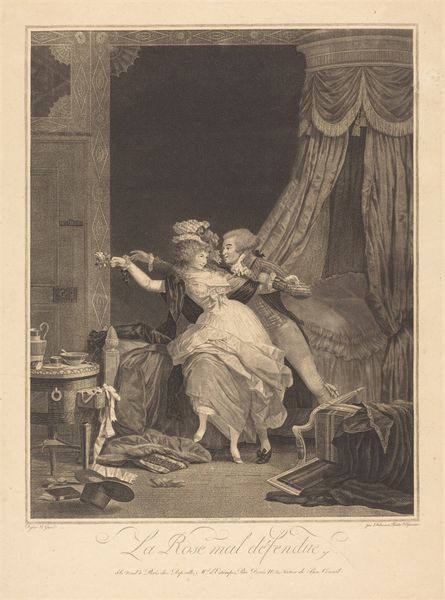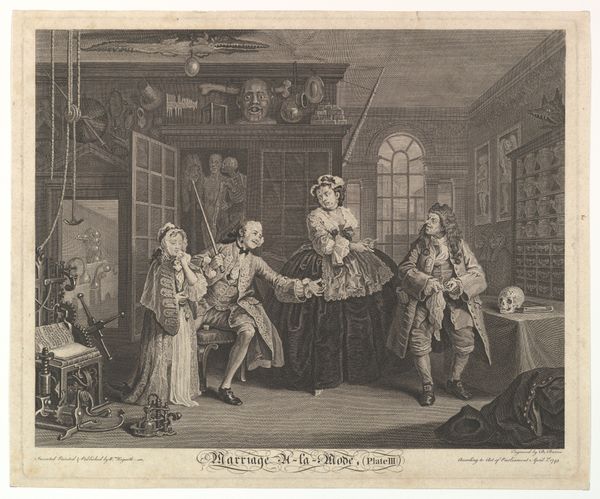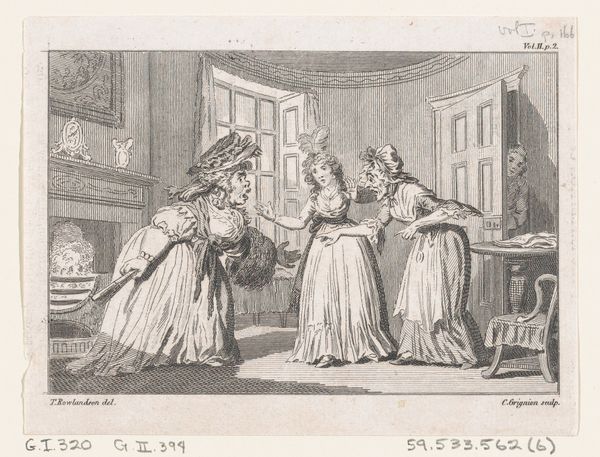
intaglio, engraving
#
narrative-art
#
baroque
#
intaglio
#
old engraving style
#
genre-painting
#
history-painting
#
engraving
Dimensions: height 381 mm, width 439 mm
Copyright: Rijks Museum: Open Domain
Editor: Here we have Charles Dupuis’s “Interieur met drie generaties,” an engraving from sometime between 1695 and 1742. It has a quiet, domestic feel to it. The lines are very precise and create so much texture in the fabric, but what else do you see in this piece? Curator: Formally, one notices the deliberate arrangement of figures, creating a pyramidal structure, a common device in Baroque art. This provides a sense of stability and order, despite the implied activity. Note also the stark contrast between light and shadow. Can you see how this directional light not only illuminates the central figures, but also adds drama and depth? Editor: Yes, I see it now. The light seems to be coming from the upper right, casting shadows that help define the forms and direct your eye through the composition. But how does the content interact with that light? Curator: The narrative content – three generations engaged in various tasks – supports the visual harmony. Consider the repetition of curved lines—in the women's clothing, in the furnishings—creating a visual echo. Are those curves symbolic, would you guess? Editor: They appear intentional, creating unity through a visual vocabulary of shape and shadow. It does seem everything relates, doesn't it? It seems so… Baroque, orderly. Curator: Precisely. The rigorous visual framework reinforces the theme of intergenerational continuity, elevated through technique into something timeless. Editor: So, even without knowing the specifics of the scene, analyzing the visual structure helps us understand the deeper themes? Curator: Absolutely. The intrinsic qualities – the composition, light, line – provide a direct line to meaning. Close observation teaches us so much!
Comments
No comments
Be the first to comment and join the conversation on the ultimate creative platform.
